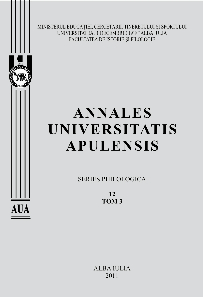‘Gramatica de la învăţătura fizicii’. Aspecte ale didacticismului
“A Grammar from the Teachings of Physics”. Aspects of Didacticism
Author(s): Liliana SoareSubject(s): Language and Literature Studies
Published by: Universitatea »1 Decembrie 1918« Alba Iulia
Keywords: classifications; definitions; didacticism; explanations; glosses; quotes; references
Summary/Abstract: Amfiloch of Hotin is a scholar whose activity is representative for the Moldavian Enlightenment at the end of the 18th century. He had a prolific scientific activity, being the author of the first Romanian printed geography, of a mathematical textbook, of a theological text and of a treaty of natural sciences, Gramatica de la învăţătura fizicii [The Grammar of Learning Physics], a manuscript elaborated in 1796. This manuscript was edited only in 1990, by two researchers from the Republic of Moldavia, with Russian characters. This text is of a paramount importance for the development and dissemination of the scientific terminology in various fields of science (geography, astronomy, botany, zoology, physics, chemistry, mineralogy, anatomy) at the end of the 18th century. The present paper aims at studying the stamp of didacticism and the way it manifests at the level of this science popularization text. As a dominant strategy, didacticism can be circumscribed from the perspective of knowledge transmission (producing conditions, assumed roles). Didacticism has been defined from three perspectives: from a situational perspective, didacticism manifests itself in a communication situation, characterized by a cognitive disequilibrium: the sender holds information and knowledge which are ‘superior both quantitatively and qualitatively’ and which is sent to the receiver in a text marked by explanations forms; from a formal perspective, didacticism manifests itself through mechanisms such as: definitions, explanations, exemplifications, classifications, references etc.; from a functional perspective, didacticism is identified in the intention and finality assumed by the text, that of exposing, teaching, showing, explaining etc. In this text of science popularization, serving practical purposes, didacticism represents a discourse strategy which manifests through specific mechanisms and common features that subordinate the fundamental principles of scientific communication: dialogue, as a typical Enlightenment form of text organization, explanatory terminological structures, definitions, explanations, exemplifications, classification, quotes, references, special graphical forms etc. Definitions are numerous: ‘Tilescopiu esti un meşteşug optricu ales a căuta lucrurile depărtate, că le măreşte mult şi le face arătate aproape de noi’ (79), ‘Animoscopeo este un meşteşug cu a căruie mijlocire să văd schimbările aerii şi a vântului’ (81), ‘Cuvântul uranologhie esti grecesc, ca va să zică vorbire pentru ceriuri’ (108). Quite often, definitions are doubled by explanations: ‘Cuvântul planetografie va să zică scrisoare pentru planete. Iar cuvântul planetă va să zică rătăcire. Care să numesc stelile celi ce nu merg drept şi îmblă rătăcind prin aeră’ (112) and exemplifications: ‘Cuvântul meteoron va să zică înălţare în sus ori deasupra noastră, în aeră, cum sânt nourii, fulgerile şi alt.’ (131) in order to facilitate the understanding of the new terms.
Journal: Annales Universitatis Apulensis. Series Philologica
- Issue Year: 12/2011
- Issue No: 1
- Page Range: 353-360
- Page Count: 8
- Language: Romanian

